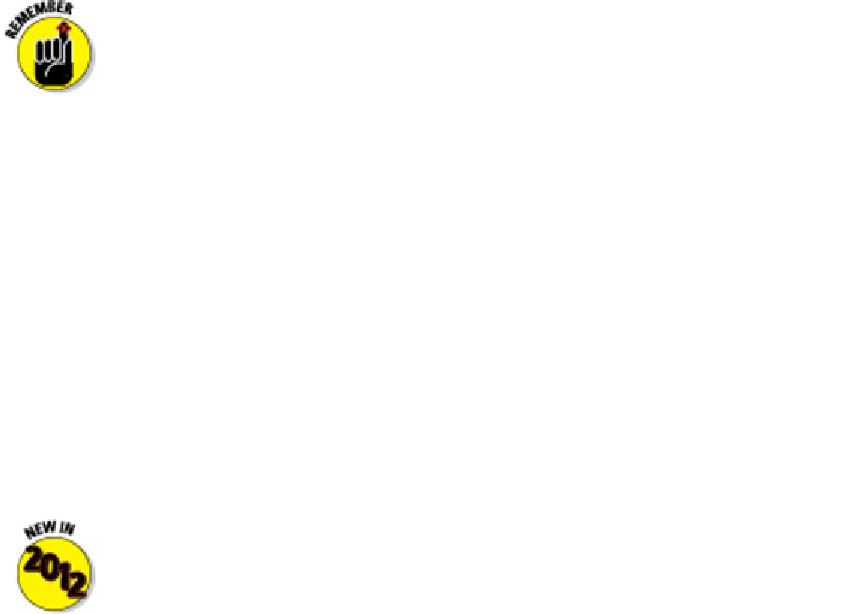Graphics Programs Reference
In-Depth Information
As I explain in Chapter 10, command-first editing — or
verb-noun editing
in
AutoCAD-ese — is one of three different approaches to modifying objects in
AutoCAD. I concentrate on this method, where you start a command and then you
pick the objects on which the command will act, because it's the only method that
works for all editing commands in AutoCAD.
Your AutoCAD Tool Kit
Table 11-1 lists AutoCAD's most-frequently-used editing commands. It shows the tool
icons found on the Ribbon, the classic toolbar, and the classic menu, and it gives the of-
ficial command name with corresponding alias (where one exists) for the typists in the
room. Ribbon buttons are on the Home tab's Modify panel in the Drafting & Annotation
workspace. In the AutoCAD Classic workspace, look for these commands on the Modify
or Modify II toolbar and Modify menu.
The ARRAY command has undergone a massive revision in AutoCAD 2012 —
so much so that it hardly qualifies as a Modify command anymore. I cover the new
associative array feature in Chapter 18. However, I think there's still a need for
simple arrays — that is, copies of objects in regular patterns — so I explain how
to do those (and it's just a little more difficult than it used to be) in this chapter.
The icons and input locations for the four Array commands shown Table 11-1 run
the new associative array commands which I cover in Chapter 18; I include them
here because they're still grouped with the other Modify commands.

